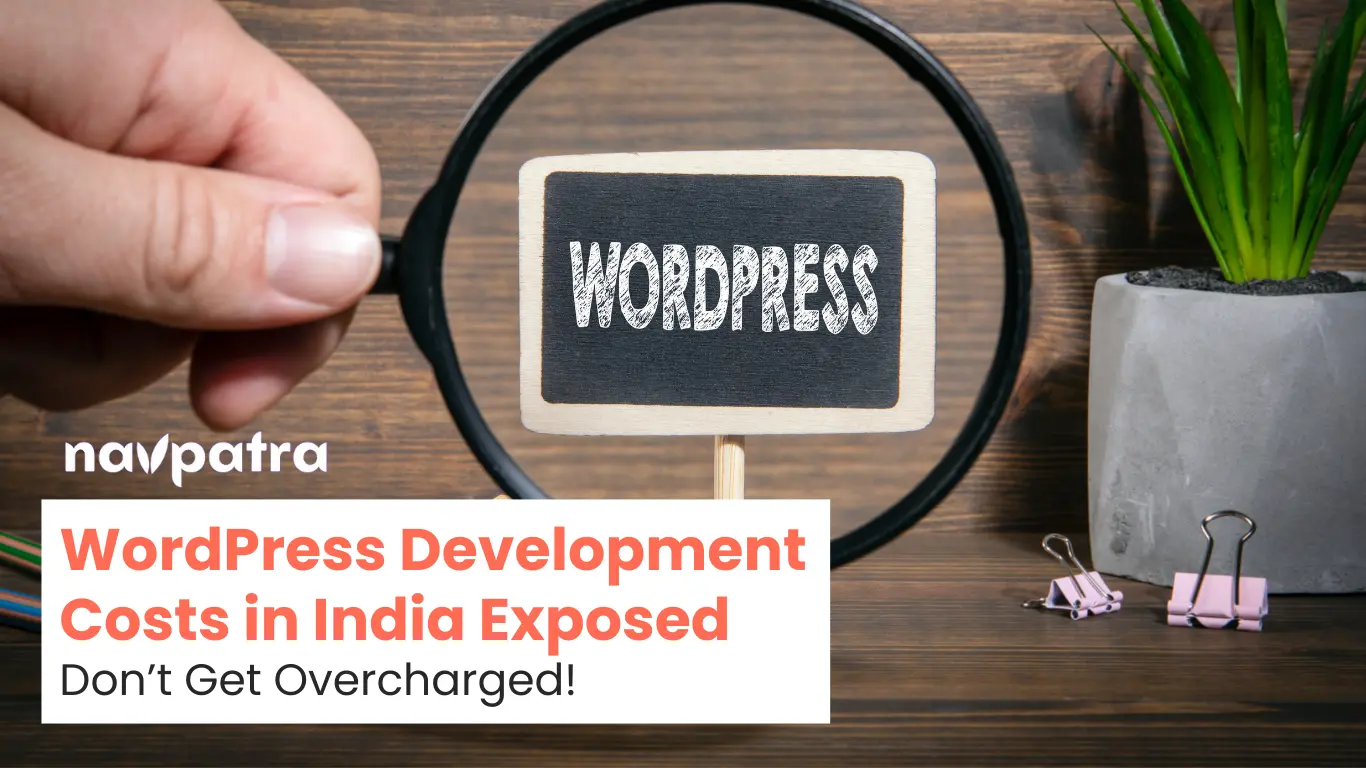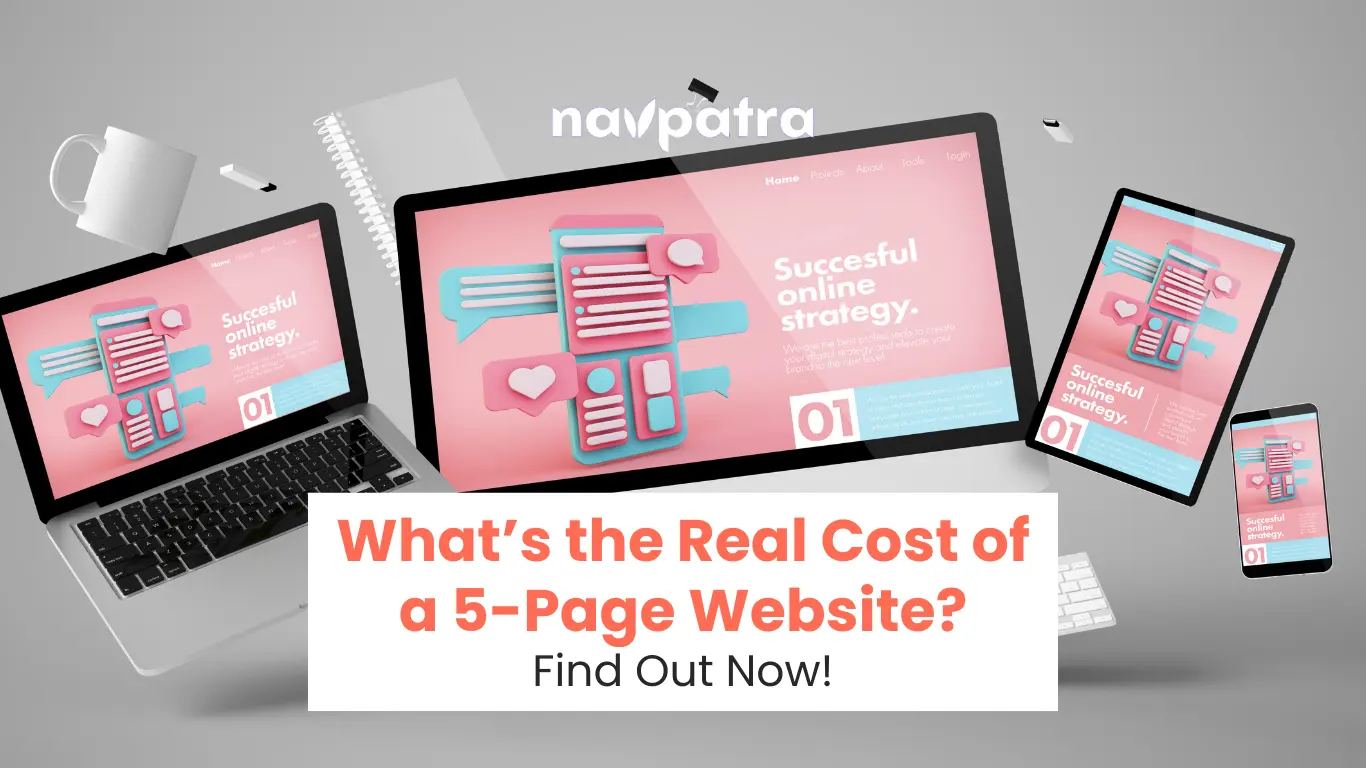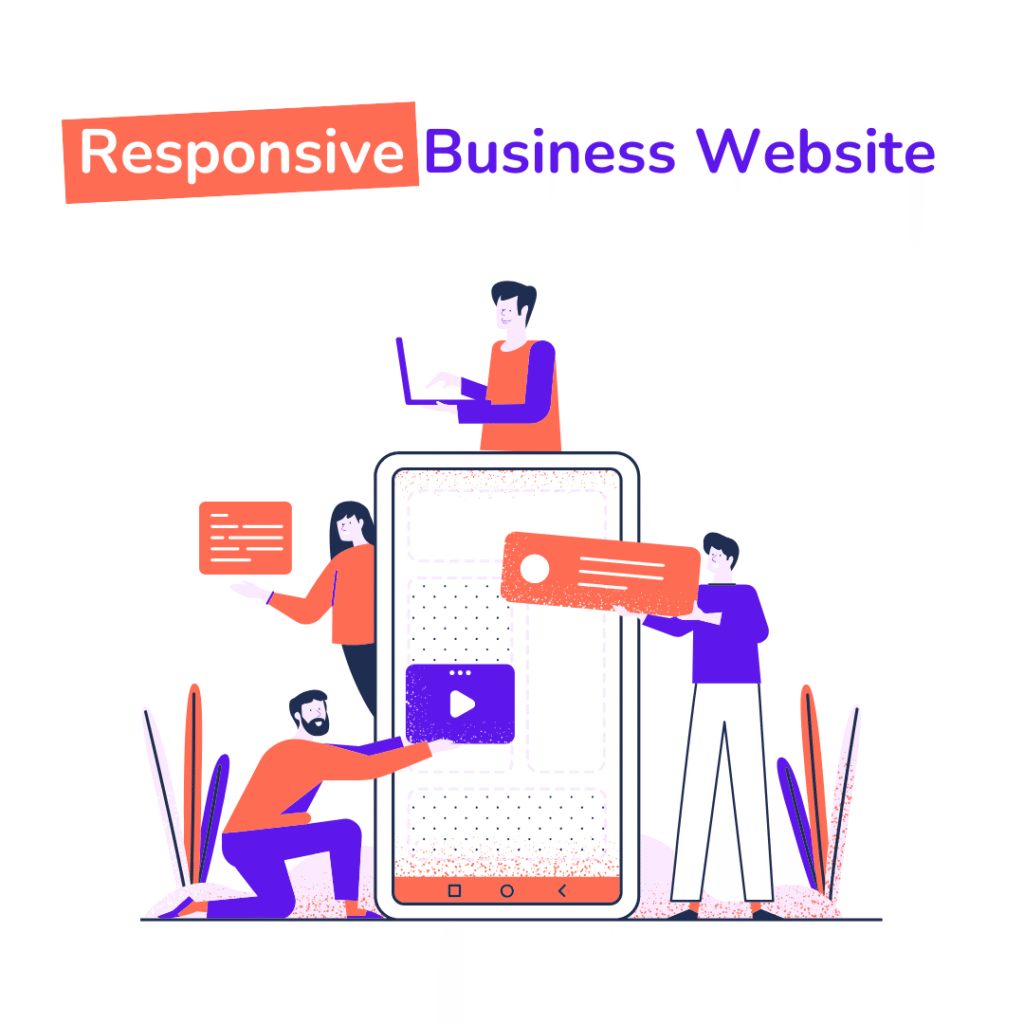Do I Need Website Redesign? A website is like a digital storefront—it needs to look good, work fast, and provide a great experience. But with changing trends and user expectations, even the best websites can feel outdated over time.
That’s why businesses redesign their websites every 1.5 to 2.5 years to stay fresh and relevant.
75% of a website’s credibility comes from its design (source: forbes.com). A poorly designed site can drive visitors away, while a modern, user-friendly design builds trust and keeps people engaged.
Whether you are updating an old design or starting from scratch, a well-planned redesign can boost traffic, increase conversions, and strengthen your brand. Ready to give your website a fresh look? Let’s explore in!
A website redesign involves making significant changes to your site’s design, structure, content, and functionality. This process aims to improve user experience, update the site’s appearance, and ensure it meets current technology standards.
Why Website Redesign Is Important?
- It enhances user experience and improves site speed.
- It gives your site a modern look and better functionality.
- It helps you achieve higher conversions and better SEO.
What Does Website Redesign Includes?
- Design Overhaul: Updating the visual elements to create a modern and appealing look.
- Structural Changes: Reorganizing the site’s layout to enhance navigation and usability.
- Content Update: Refreshing or adding new content to keep information relevant and engaging.
- Functional Improvements: Enhancing features to improve site performance and user interaction.
Insights: 94% of first impressions are shaped by a website's design.
Major Benefits of Website Redesign
There are several benefits of website redesigning, however, some major benefits are as follows:
- Enhanced User Experience: A well-executed redesign focuses on improving user engagement, leading to increased time spent on the site and higher conversion rates.
- Modern and Professional Image: A redesigned website with a modern, visually appealing design and intuitive navigation conveys professionalism, credibility, and trustworthiness, leaving a positive impression on visitors.
- Improved Conversion Rates: Redesigning key elements such as calls-to-action, forms, product pages, and checkout processes can result in improved conversion rates, incorporating UX best practices for a seamless user experience and enhanced customer engagement.
- Enhanced Brand Perception: A redesigned website that reflects brand identity, values, and messaging effectively strengthens brand perception, fosters brand loyalty, and builds stronger connections with customers and prospects.
- Increased Traffic and Engagement: By implementing SEO improvements, mobile optimization, and user-focused design, a website redesign can attract more traffic, improve search engine rankings, and encourage repeat visits and interactions.
A poorly designed website with bad content causes 38% of visitors to leave.
When Is It Time to Redesign Your Website?
If your website feels outdated, does not match your brand, or looks old-fashioned, it’s time for a refresh. A good website should be easy to navigate, mobile-friendly, and visually appealing. If it’s confusing or slow, visitors will leave quickly.
Technology changes fast, and so do customer expectations. Ideally, you should revamp your website every 2-3 years, with small updates in between. If your site still has outdated elements like Flash, that’s a big red flag!
Look at key signs: Is your site loading slowly? Are visitors leaving without taking action? Are your competitors’ websites better? If yes, a redesign is needed.
Also, if your business has rebranded or changed direction, your website should reflect that. Listen to customer feedback, if they struggle with your site, it’s time to improve it. A well-designed website keeps visitors engaged and boosts your business!
Signs It’s Time for a Website Redesign
Your website should work for your business, not against it. If it is not performing well, it might be time to consider a redesign. Here are clear signs to look out for:
- Your design feels old or off-brand: If your website looks outdated or no longer matches your current brand identity, it’s time for a change. A modern and professional design helps build trust and stay ahead of competitors.
- The user experience is frustrating: Is your site hard to navigate? Are visitors leaving quickly without taking action? These are signs of poor user experience. Confusing layouts, hard-to-find content, or a non-responsive design can all push people away.
- Your site runs slow or shows errors: Slow loading times or frequent glitches create a bad impression. Performance issues not only frustrate users but also hurt your search engine ranking.
- You see a drop in key metrics: If traffic is steady but leads or sales are falling, your site might not be doing its job. A redesign can help improve conversions by making the experience smoother and more engaging.
- Your site has security risks: Using outdated technology can leave your site vulnerable to hacks and data breaches. Redesigning ensures your website runs on secure, modern code.
Key Challenges of Website Redesigning
Redesigning a website sounds exciting, but it comes with a few serious challenges. If not planned well, it can hurt your SEO, performance, or user experience. Here are the most common challenges you should watch out for:
- Defining Clear Goals: Without a clear purpose, your website redesign can become confusing and directionless. You need to know what you want to improve such as design, speed, UX, or conversions.
- Maintaining SEO Rankings: A redesign can mess with your SEO. You risk losing rankings, backlinks, or traffic if you don’t handle redirects, page structure, and keywords properly.
- Content Overhaul: Old content may not fit the new design or strategy. But rewriting and restructuring content takes time, effort, and coordination.
- Team Collaboration Issues: Website redesign involves designers, developers, writers, marketers, and managers. Without clear communication, the project can face delays or misalignment.
- Budget and Time Constraints: Redesigning a website can cost more and take longer than expected. Unplanned revisions or technical issues can stretch your budget and timeline.
- Testing and Feedback Loops: Every part of your site, like forms, navigation, and mobile responsiveness, needs testing. Real user feedback might reveal big issues that require last-minute fixes.
- Forgetting the User: Many redesigns focus too much on how a site looks rather than how it works for the user. Always keep the user experience front and center.
- Data Migration and Integration Challenges: Moving existing content and ensuring integrations (like payment gateways or CRMs) still work can be tricky and require technical expertise.
Insights: More than 84% of users prefer browsing websites on mobile devices rather than desktop-focused ones.
10 Crucial Steps of the Website Redesign Process
If you are thinking about giving your website a fresh look, you are on the right track. A website is often the first place people learn about your brand.
If it looks outdated or does not work well, it can drive customers away. That’s why going through the right website redesign process is so important.
Let’s walk through the 10 most important steps to help you successfully redesign your website and boost your online presence.
Understand Why You Are Redesigning
Before jumping into the design part, take a step back. Ask yourself why you want to redesign your website. Is it outdated? Is it too slow? Maybe it’s not converting visitors into customers.
Understanding the reason behind the redesigning website process helps you set clear goals. It also keeps you focused throughout the project. When you know the “why,” every decision becomes easier and more purposeful.
Build the Right Team
You can’t do everything alone. Whether you have an in-house team or plan to hire experts, it’s important to bring together the right people. A solid redesign website team usually includes a UX designer, developer, content writer, marketer, and project manager.
If you don’t have a team yet, consider working with a UX agency. They can handle the website redesign process professionally while letting you focus on your business. The right people can make your redesign smooth and stress-free.
Audit Your Current Website
Before you redesign your website, you need to know what’s working and what isn’t. Use tools like Google Analytics and heat maps to see where users drop off, which pages get the most traffic, and what takes too long to load.
The goal is to find what you should keep, what needs to be improved, and what can be removed. This step in the redesigning website process helps you avoid starting from scratch when you don’t need to.
Know Your Audience
Your visitors should be at the center of your redesign. Think about who they are, what they want, and how they use your site. Are they mostly on mobile? Are they looking for quick answers?
Knowing your audience helps you create a site that feels personal and easy to use. In this step of the redesigning website process, your goal is to build a better experience for real people. A user-friendly design keeps visitors engaged and improves your conversion rates.
Review and Plan Your Content
Your content is just as important as your design. Look at what you already have and decide what to update, remove, or rewrite. A successful redesign website project includes a clear content strategy.
Your words should guide your visitors, explain your services, and encourage them to take action. Keep the language simple, helpful, and in line with your brand. Good content builds trust and helps you meet your business goals.
Map the User Journey
Think about how someone uses your website from start to finish. This is called the user journey. What pages do they visit? What actions do they take?
Mapping this out helps you plan your new layout, navigation, and structure. In this part of the redesigning website process, your goal is to make it easy for users to go from landing on your site to completing an action. That could be signing up, buying something, or booking a call.
Create Wireframes and Prototypes
Now that you have your goals and plan, it’s time to start designing. Begin with wireframes, which are simple page layouts showing where things will go. Then, turn them into prototypes that you can click through.
This step in the website redesign process helps you see how your ideas work in real life. It’s better to test things early and fix issues now than to change everything after development begins.
Wireframes give structure, and prototypes bring your design to life.
Test the Design with Real Users
Even if your design looks great, it might not be easy for users to navigate. That’s why you need to test it before moving into development. Ask a few people to try out your prototype. Watch how they use it and where they get stuck.
This step in the redesign website journey ensures your design actually works. It helps you spot problems before they go live and saves time and money later. You want to make sure users enjoy using your new site.
Work Closely with Developers
After testing, it’s time to hand everything over to your developers. Make sure they have all the files, design notes, and feedback they need. But don’t walk away just yet.
Stay in touch during development. This makes the redesign website process smoother.
If something can’t be built the way you imagined, your team can quickly find a solution together. Constant communication helps you avoid delays and ensures the final product matches your vision.
Launch and Keep Improving
Now, you are ready to go live. But launching is not the end. Once your redesign website is live, you need to monitor it closely. Test it on mobile, desktop, and tablets. Check for broken links, loading issues, and formatting problems.
Look at how users are interacting with your new design. Are they staying longer? Are more people converting? Use this data to continue improving.
The website redesign process does not stop at launch. It’s an ongoing journey of testing, learning, and refining.
Average Website Redesigning Cost in India
On average, the website redesigning cost in India ranges from ₹20,000 to ₹5,00,000 or more. This large range exists because each website has different needs. A small business website with five pages will cost much less than a complex website with custom features and integrations.
For example, if you just need to update the design on a basic 5-10 page website, you might only spend around ₹20,000 to ₹50,000.
But if you are a mid-sized company wanting better SEO, improved UI/UX, and performance upgrades, the cost of website redesign could reach ₹2,00,000 or more. A full redesign for a large, custom-built site could go even higher.
Design and UI/UX Redesign Costs
Design is one of the most important parts of any website. It helps users trust your brand and keeps them engaged. When it comes to a website redesign, improving the UI/UX (User Interface and User Experience) is a big step.
A good design helps visitors move through your site easily and take the actions you want, like filling out a form or making a purchase.
For a simple visual redesign, the cost could be around ₹15,000 to ₹30,000. If you want a complete UX upgrade with wireframes, user journey maps, and interactive prototypes, the website redesign cost can go up to ₹2,00,000 depending on the size and goals of the site.
Development Costs for Website Redesign
Once the design is ready, it needs to be turned into a working website. This is where the development cost comes in. Development involves coding the front-end (what users see) and sometimes the back-end (what runs in the background).
If you are working with a simple HTML website, redesigning it might cost around ₹10,000 to ₹40,000. For content management systems like WordPress or Shopify, the website redesigning cost can go up to ₹1,50,000.
And if your site requires custom development, like membership portals or dashboards, you may need to spend ₹2,00,000 or more. Development is a crucial part of the project because it turns your design into a fast and functional site.
Content Updates Cost
Many people overlook content when calculating the cost of website redesign, but it’s one of the most important factors.
Your message should be clear, helpful, and written in a way that connects with your audience. Updating content means editing old information, improving clarity, and making your copy more persuasive.
Simple changes may cost around ₹5,000 to ₹10,000. But if you hire a professional copywriter to rewrite each page, expect to spend ₹500 to ₹1,500 per page.
A complete website content refresh could cost anywhere between ₹20,000 and ₹1,00,000, depending on how many pages your site has. Good content drives conversions and improves SEO, so this step is always worth considering.
SEO & Performance Optimization Cost
Search Engine Optimization is a must-have when you are redesigning your site. Without SEO, your website may look amazing but get no traffic. That’s why SEO is a key part of the overall website redesign cost.
SEO during a redesign includes keyword research, meta tags, image optimization, faster loading times, and mobile responsiveness. These tasks improve your visibility on search engines like Google.
For basic SEO services, the cost could start from ₹20,000. For more advanced work, expect to pay up to ₹1,00,000. If you want your new website to bring in more traffic and leads, then investing in SEO is a smart choice.
Platform or CMS Migration Cost
Some redesign projects also involve moving the website to a new platform. For example, you may want to switch from Wix to WordPress, or from WordPress to Shopify. This step requires extra time and technical work, which affects the total website redesigning cost.
Migrating a site means transferring all your content, building the layout again, and making sure nothing breaks during the process. This can cost anywhere from ₹15,000 to ₹75,000 depending on how complex your site is.
But if your current platform is limiting your growth, then making this move during a redesign can make a big difference in the long run.
Mobile Optimization Cost
More than half of website traffic today comes from mobile devices. That’s why your redesigned website must look and work perfectly on phones and tablets. If your current site isn’t mobile-friendly, now is the best time to fix that.
The cost of website redesign for mobile optimization can range from ₹10,000 to ₹50,000, depending on how your site was built and how many changes are needed.
Google also ranks mobile-friendly websites higher, so this investment boosts both user experience and visibility.
Extra Features and Integrations Cost
During the redesign, you might also want to add features like a live chat tool, contact form, payment gateway, CRM, or newsletter signup. Adding such features affects the cost of website redesign.
Each tool may require a one-time integration fee or even ongoing subscriptions. For standard setups, the cost could be ₹5,000 to ₹30,000. Custom integrations could go up to ₹50,000 or more.
These features are not just nice-to-haves. They improve engagement, generate leads, and simplify how your website works.
Ongoing Maintenance Cost
Even after your redesigned site is live, you will need regular updates, backups, and performance checks. This is known as maintenance.
You can hire an agency that charges ₹5,000 to ₹20,000 per month for full support.
Including maintenance in your plan ensures your site stays fast, secure, and up to date. Think of it as protection for your investment.
Insights: The web design industry reached a market value of $42.2 billion in 2023.
How to Redesign a Website in Just 7 Phases?

Redesigning a website is a big task, but if done right, it can boost traffic, improve user experience, and help grow your small business with its benefits. Let’s check out a clear and simple website redesign process to help you get the results you want.
Phase 1: Discovery and Research
Before you begin the redesign website project, take time to understand your current site. This step helps you discover what’s working, what’s broken, and what your users expect.
Start with a full website audit. It includes:
- Checking technical performance like speed, mobile compatibility, and loading time
- Reviewing user behavior such as bounce rate and how visitors move through the site
- Looking at conversions, like how many people complete forms or make purchases
You should also run a competitor analysis. Look at other websites in your industry. What do they do better? What can you learn from them?
Finally, gather user insights. Check support tickets to see where users are getting stuck. You can also run usability tests or map user journeys to better understand pain points. These insights are important to guide your redesigning website process.
Phase 2: Planning and Strategy
Now that you have gathered all the data, it’s time to plan. Good planning will keep your website redesign process on track and aligned with your goals.
First, define clear goals. What do you want your new website to achieve? Maybe you want more sales, more leads, or faster page load times. Set performance benchmarks so you can track success later.
Create a project roadmap. This should include:
- Project scope
- Timeline and key milestones
- Budget and resource planning
- Your target audience and user personas
This roadmap will guide your team throughout the redesign website journey and help avoid confusion and delays.
Phase 3: Designing Your Website
This is the fun part where your ideas become visuals. Start by organizing your website content. Create a sitemap that lays out your page structure and how users will move from one section to another.
Then design wireframes. These are simple layouts that show where things like menus, buttons, and text will go. Wireframes are the foundation of your new website.
When working on the visual design, focus on user interface (UI) and user experience (UX) elements:
- Use a clear color palette that fits your brand
- Choose fonts that are easy to read
- Make buttons easy to spot and click
- Keep forms short and simple
- Add visual feedback like hover effects or animations
Phase 4: Prototyping and Testing
Before you hand off your design to the development team, build an interactive prototype. A prototype lets users click around and test the flow of the new website as if it were live.
This is a great way to spot problems early. Even if a design looks great, it might confuse users. Real people might get lost or stuck, and you wouldn’t know until it’s too late.
That’s why usability testing is important. Invite real users to try the prototype. Ask them to complete tasks and watch how they interact with the site. Their feedback will help you make the site better before coding begins.
Phase 5: Development
Now that your design is ready and tested, it’s time for developers to bring it to life. Development involves writing the actual code that turns your design into a real website.
If you are working on a redesign website project, developers need to be careful with existing code. Sometimes it makes sense to keep some parts and just update others. This helps reduce time and cost.
Share all the design files and assets with the developers. That includes style guides, images, fonts, and links to your prototype. Good communication between designers and developers will speed up the website redesign process and avoid mistakes.
Phase 6: Testing and Debugging
Once your site is developed, it’s time to test again. Test everything, from navigation and buttons to how fast pages load. Make sure it looks good and works on all devices, including phones and tablets.
Check for broken links, missing images, and typos. Test forms, payment gateways, and sign-up flows. This is your last chance to catch errors before your audience sees the new site.
Run both manual and automated tests to ensure everything is working perfectly. A smooth launch depends on this step.
Phase 7: Launch
You are now ready to go live. But don’t rush it. Plan your launch carefully.
Choose a time when your traffic is low. This makes it easier to fix any unexpected problems without many users noticing. After launching, double-check that everything works.
Monitor the site closely. Look at traffic data, bounce rates, and conversion rates. This will help you see what’s working and what needs improvement.
Insights: Improved user experience (UX) design can boost conversion rates by as much as 400%.
How Long Does a Website Redesign Take?
The time it takes to redesign a website depends on the size, complexity, and goals of the project. On average, a standard website redesign takes 6 to 12 weeks from start to launch.
For smaller websites with basic updates, it can take just 3 to 4 weeks. However, larger websites with custom features, content updates, and SEO improvements can take up to 3 to 6 months.
The process includes planning, auditing the old site, creating wireframes, designing new layouts, content creation, development, testing, and finally launching the site.
Each phase takes time and requires collaboration between designers, developers, content writers, and stakeholders.
If you are working with a professional agency, the timeline is usually well-structured with weekly updates and milestones. But if you are redesigning in-house with a small team, things might move slower based on availability and decision-making speed.
How Often Should You Redesign Your Website?
You should redesign your website every 2 to 3 years. Technology, design trends, and user expectations change quickly. If your site appears outdated or does not function well on mobile devices, it’s time for a redesign.
Also, if your business goals or brand identity change, your website should reflect that. Regular updates help you stay competitive and improve user experience. Keep an eye on metrics like bounce rate and conversion rate. If they drop, a redesign may be needed sooner.
A fresh and functional website keeps visitors engaged, demonstrating that your brand is active and trustworthy.
Website Redesign vs. Website Refresh
The main difference between a website redesign and a website refresh comes down to how big the changes are.
- Website Redesign: A website redesign is a complete makeover. It is much more than surface-level changes. Redesigning a website usually includes rebuilding its structure, improving navigation, changing how it functions, updating branding, and sometimes moving to a new platform. It’s like tearing down the old house and building a new one from scratch.
- Website Refresh: A website refresh focuses on small updates that improve how your site looks or feels. These might include changing colors, updating images, tweaking fonts, or slightly adjusting the layout for better user experience. It’s like giving your website a fresh coat of paint. Regular refreshes help keep your site modern and user-friendly.
What Is a Website Refresh?

A website refresh means updating your current site without changing its overall structure. Think of it as giving your home a fresh coat of paint instead of tearing down walls.
What Does Website Refresh Includes?
- Updating colors, fonts, or images to match your brand.
- Making small design improvements for a better user experience.
- Refreshing content to keep your site relevant.
Why Choose a Website Refresh?
- It’s faster and more affordable than a full redesign.
- Your website stays functional with minimal disruptions.
- It helps keep your site looking modern and engaging.
Website Redesign vs. Website Refresh: Which One Do You Need?
A website redesign means rebuilding your site from the ground up. It includes major changes to layout, design, features, and user experience. Choose this when your site looks outdated, loads slowly, or no longer meets your business goals.
A website refresh is a lighter update. It may involve changing colors, images, or updating text without changing the structure. Choose this when your site works fine but just needs a fresh look.
If your website has deeper problems, go for a redesign. If it just needs minor improvements, a refresh is enough.
Insights: 62% of top-ranking websites prioritize mobile optimization for better performance and user experience.
How to Choose the Right Web Redesigning Agency?
Choosing the right web design agency is crucial for creating a website that meets your business goals. Here’s what to consider:
Expertise and Experience
- Look for agencies with years of experience and a strong track record.
- Industry-specific experience helps them understand trends and competition.
- Check if they can handle different design styles and functionalities.
Portfolio
- Review their past projects to assess design quality and brand consistency.
- Look for case studies showing how they solved client challenges.
- Check data on performance improvements for past clients.
Understanding Your Needs
- Ensure they align with your brand and business goals.
- Communicate website type, budget, and timeline clearly.
- They should target your audience effectively to boost engagement.
Communication and Process
- Their communication should be clear and professional.
- Ask about their design process and project updates.
Pricing and Contracts
- Ensure pricing fits your budget and includes all deliverables.
Client Satisfaction and Growth
- Check reviews, testimonials, and references.
- Choose an agency focused on innovation and long-term scalability.
Insights: Websites that take more than two seconds to load can lose up to 60% of visitors. Even a one-second delay may reduce conversions by 7%.
Conclusion
A well-designed website is a powerful tool for growth. Whether you need a simple refresh or a full redesign, keeping your site updated ensures better user experience, higher credibility, and improved performance.
With technology and trends evolving rapidly, businesses must adapt to stay ahead.
If your website feels outdated, loads slowly, or fails to engage visitors, now is the time for a redesign. A fresh, modern site can boost traffic, increase conversions, and strengthen your brand’s presence.
Ready to revamp your website? Start your redesign today and create a site that truly works for your business!











